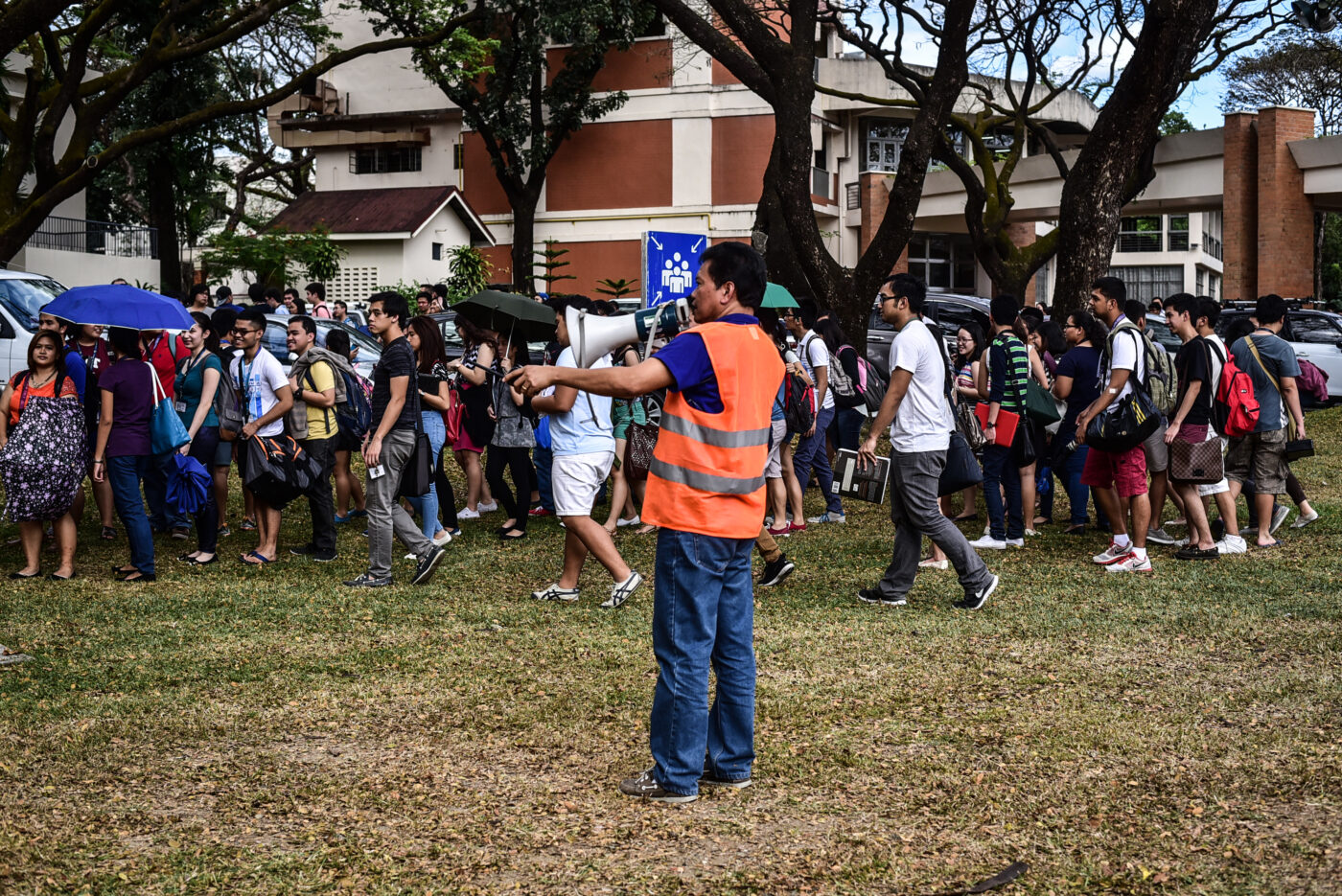FOUR EMERGENCY drills were conducted by the Ateneo on February 24 to further prepare the Loyola Schools (LS) community for a state of emergency.
The drills included earthquake evacuation, fire evacuation, campus shut down evacuation and the shelter in place. The latter two were new additions to the emergency protocols.
The earthquake evacuation drill and the fire evacuation drill will be executed in times of earthquake and fire, respectively.
The campus shut down evacuation drill will be done in situations where there is a need to evacuate the whole campus, while the shelter in place drill will be done in situations where there is an imminent threat to safety.
In an interview with The GUIDON, LS Unit Emergency Response Team Coordinator (Luert) Joy Salita said that the execution of the emergency drills were successful.
The LS Luert, which is composed of administrators, professionals and non-teaching staff, serves as the communication link between the University Emergency Management Team and the campus community during a major emergency or disaster.
“Our goal was to improve our emergency response procedures and communications; conducting these emergency drills helped pinpoint the things that worked well, as well as the areas that can be improved [on],” she said.
Salita said that there are still improvements to be made with regard to exit plans during campus shut down, increased awareness on the roles that each member of the community needs to perform in emergency situations, and systems and structures that will support emergency response such as the public address system and e-mail alerts.
However, she said that one of the advantages of working on a campus like the Ateneo’s is that the expertise needed for almost any situation is at hand.
Salita said that all four drills served as a practice session for all emergency evacuations that the LS community may possibly encounter in the future.
“No two emergencies are the same, but all fall under specific frameworks, and that is what makes practice for everyone involved vital. It is also helping our community to be aware of the proper course of action, wherever they may be,” said Salita.
She highlighted that coordinating the campus drills with other university units and outside agencies contributed to the drills’ success.
The emergency drills were conducted with the help of LS Building Emergency Assistance Teams (Beats), Ateneo Institute for Sustainability, the Quezon City Fire Department, the Campus Security and Mobility Office, Megaforce Security and its Risk Management Unit, and officials from Barangay Loyola Heights.
Drill preparations
According to Salita, most of the LS community was involved in preparing for the emergency drills.
She noted that the LS Beats is a branch of the LS Luert that facilitates evacuation, headcount and fire-fighting procedures.
LS Beats Member Joy Alonzo said that all LS Beats members had to attend general assemblies and training sessions to better understand their roles during the emergency drills.
“We were given lectures on how to [conduct the drills properly] and were taught precautionary measures [in emergency situations],” said Alonzo.
She also emphasized how the emergency drills are crucial and that they should be taken seriously by the LS community, most especially the students.
For sophomore Carinna Cruz, the emergency teams were highly knowledgeable and efficient during the drills
“[The execution of the emergency drills] was organized and had a smooth flow in going to the safety area that was set,” said Cruz.







